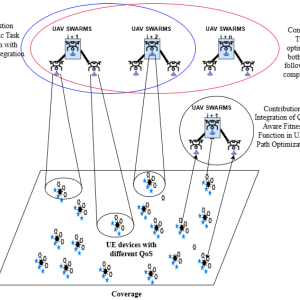In the ever-evolving landscape of drone technology, the integration of advanced sensors for Maximizing Low-Light Drone Operations has become a pivotal discussion point. As industry leaders, we understand the critical nature of making informed decisions that can elevate the efficiency and effectiveness of drone missions. In this exclusive insight, we delve into the intricacies of low-light drone operations, specifically focusing on the choice between Lidar and camera technologies.

Unraveling the Low-Light Challenge
The Significance of Low-Light Capabilities
In the dynamic realm of aerial operations, embracing the capabilities to navigate low-light conditions is indispensable. The ability of drones to perform seamlessly during dawn, dusk, or in challenging weather conditions opens up a spectrum of possibilities for industries ranging from search and rescue to surveillance.
Lidar: Illuminating the Night Sky
Precision in Darkness
Lidar, short for Light Detection and Ranging, emerges as a beacon of precision in low-light environments. Unlike traditional cameras, Lidar sensors operate on the principle of emitting laser beams and measuring the time it takes for the reflected light to return. This not only provides a reliable depth perception but also excels in scenarios where traditional cameras might falter.
Beyond Visual Limitations
One of the distinctive advantages of Lidar technology lies in its ability to penetrate visual obstructions. In situations where visibility is compromised due to fog, smoke, or even minimal light, Lidar-enabled drones can navigate with unparalleled accuracy, ensuring mission success even in the most challenging circumstances.
Camera Technology: Unveiling the Visual Spectrum
Harnessing the Power of Imagery
While Lidar offers a robust solution, traditional cameras equipped with advanced low-light imaging capabilities present a compelling alternative. The evolution of camera technology has led to the integration of features such as HDR (High Dynamic Range) and low-light optimized sensors, allowing drones to capture clear and detailed images even in the absence of ample light.
The Art of Recognition
In applications where visual recognition plays a pivotal role, such as surveillance or monitoring, cameras excel in providing intricate details. The ability to leverage color information alongside detailed imagery enhances the interpretability of the captured data, a factor crucial in various sectors.
Making the Decision: Lidar or Camera?
Operational Considerations
Mission Objectives
Understanding the primary objectives of a drone mission is fundamental in deciding between Lidar and camera technologies. Lidar excels in scenarios demanding precise spatial mapping, while cameras prove invaluable when detailed visual information is paramount.
Environmental Factors
Considering the environmental conditions prevalent in the operational area is essential. Lidar’s resilience in adverse weather conditions versus the visual clarity offered by cameras in well-lit environments necessitates a meticulous evaluation of the operational landscape.
Cost-Benefit Analysis
Upfront Investment vs. Long-Term Gains
While Lidar technology may entail a higher initial investment, the long-term benefits in terms of accuracy and reliability can outweigh the initial costs. On the other hand, cameras provide a cost-effective solution for missions where high-resolution imagery takes precedence over depth perception.
Regulatory Compliance
Navigating Legal Frameworks
Staying abreast of the regulatory landscape is paramount for drone operators. Understanding the regulatory requirements associated with the use of Lidar or camera technology ensures compliance and mitigates potential legal hurdles.
The Future of Low-Light Drone Operations
As technology continues to advance, the fusion of Lidar and camera capabilities might pave the way for a hybrid solution, combining the strengths of both technologies. The future promises innovations that push the boundaries of low-light drone operations, providing unprecedented flexibility and performance.
In conclusion, the choice between Lidar and camera technology for low-light drone operations boils down to a meticulous assessment of mission requirements, environmental conditions, and budget considerations. As leaders in the defence and aerospace industry, embracing the right technology ensures not just operational success but also sets the stage for pioneering advancements in the realm of drone technology.











